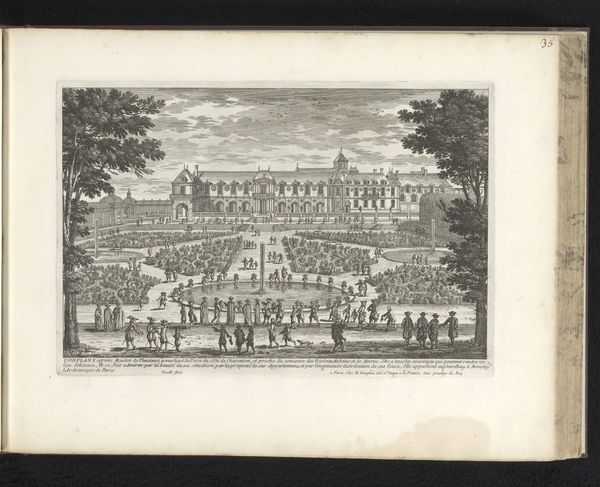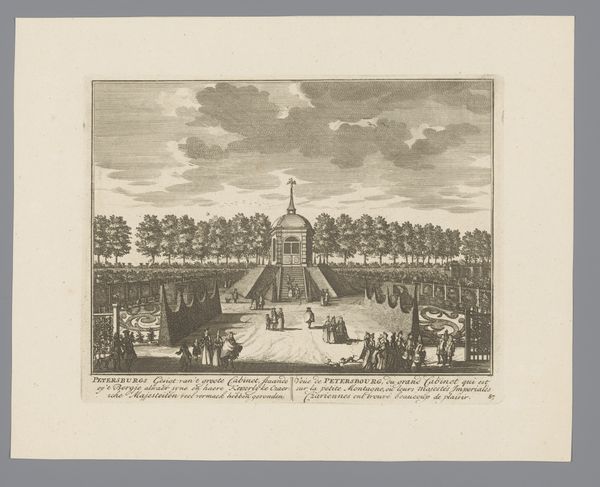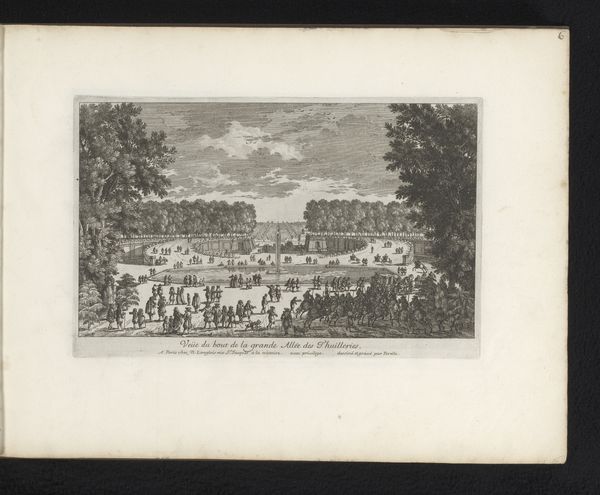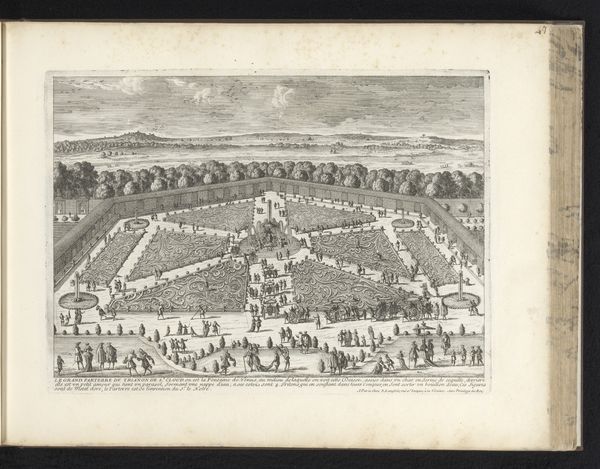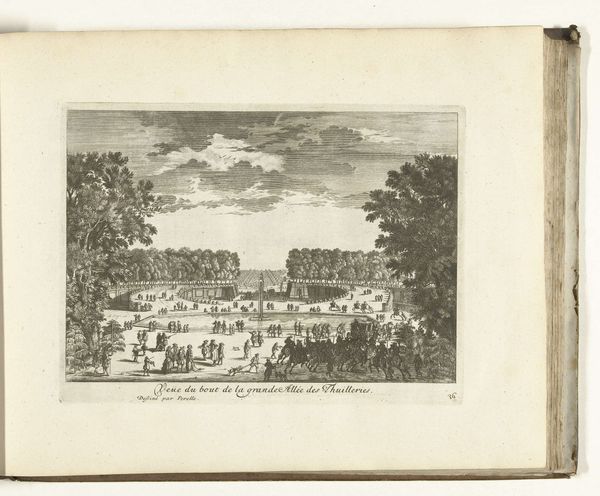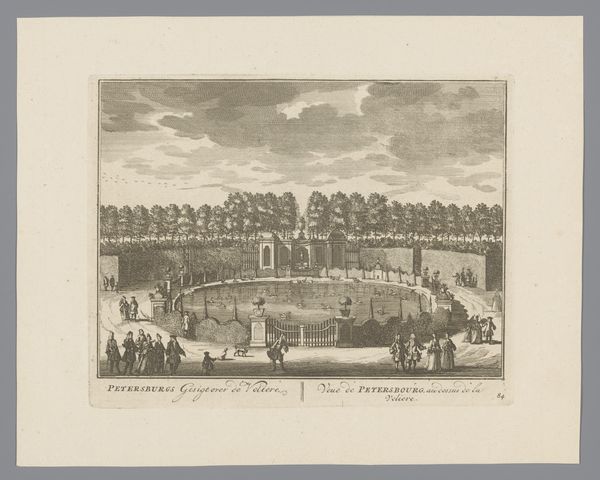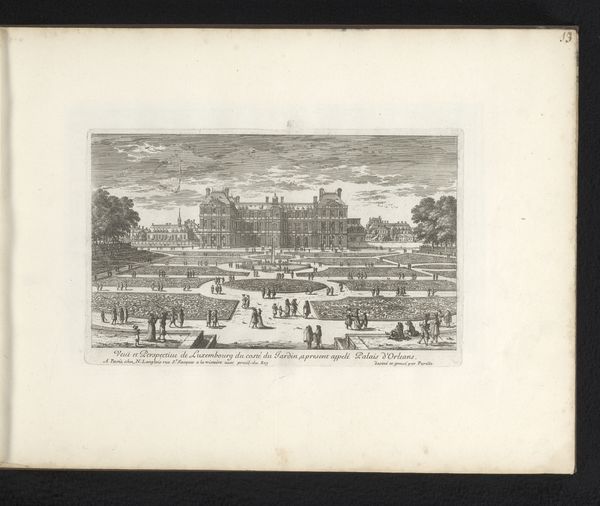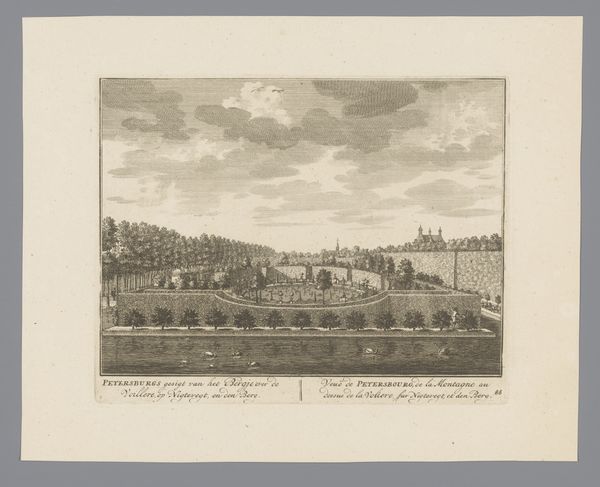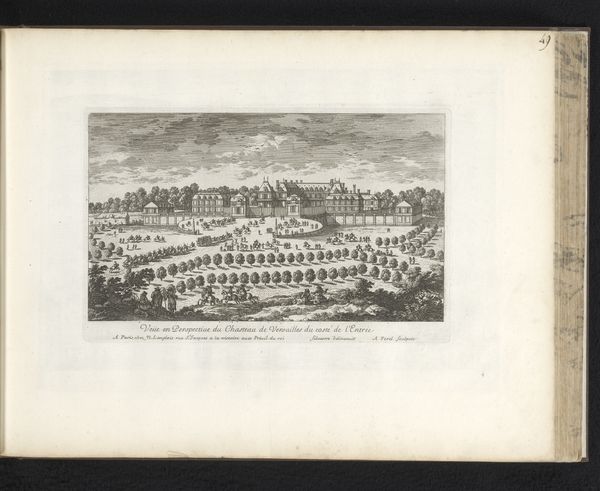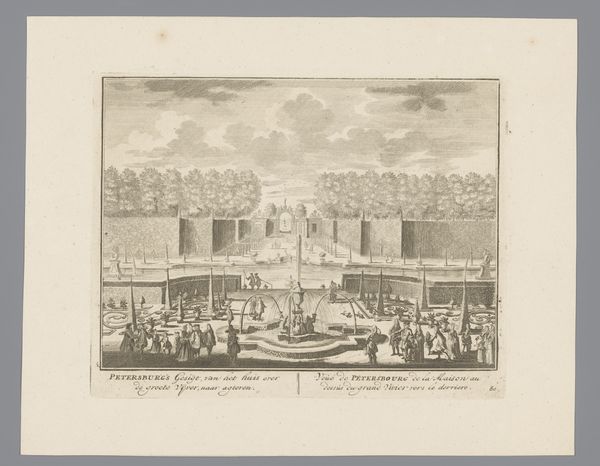
print, etching, engraving, architecture
#
baroque
# print
#
etching
#
landscape
#
form
#
line
#
cityscape
#
engraving
#
architecture
#
realism
Dimensions: height 193 mm, width 278 mm
Copyright: Rijks Museum: Open Domain
Curator: Adam Perelle's etching and engraving, "Gezicht op het Palais-Royal vanuit de tuin"—"View of the Palais-Royal from the Garden," if you prefer—offers us a glimpse into 17th-century Paris. Created sometime between 1660 and 1695, it resides here at the Rijksmuseum. Editor: Oh, I adore how tiny and bustling it feels! The whole thing seems compressed and intense, and look at all the tiny people! There’s a story in every little gathering; I wonder what they're talking about? Are they gossiping about the King? Plotting a revolution? Discussing embroidery patterns? Curator: I think "gossiping" might be the closest to reality. The Palais-Royal, after all, was the primary residence of the French Royal Family and an important space for the construction of their public image, don't you think? It would make sense that public spaces would act like little public forums, or an early equivalent of today’s comment sections on news websites. Editor: Exactly! It's like stepping into a miniature world. It’s almost… claustrophobic. I love how the perspective flattens the garden, too, almost as if everyone is crammed onto the stage. It heightens the sense of social density. Are the rigid lines intentional or the sign of inexperience? Curator: I lean towards intention. Consider the historical context. France at the time was embracing Baroque aesthetics and Absolutist rule. All art under the Sun King had to speak of absolute control. That rigorous design, and precise engraving mirrors the desire for an orderly and controlled society with the royalty firmly in place. Editor: So the geometry isn’t just about capturing reality, but reinforcing social order, using aesthetics as another mechanism of power? And here I was thinking only of aesthetics. Curator: Isn't that the delight of encountering these old works? The aesthetic is inseparable from its function within larger structures of domination. The controlled nature that meets our eye makes one pause and reflect on the true social order of things at the time. Editor: And the contrast! To think all this time has gone past, yet here we are talking about how little human nature seems to change in all those centuries. Curator: I agree. Seeing Perelle’s rendition truly does collapse history. Let's go find the revolution next.
Comments
No comments
Be the first to comment and join the conversation on the ultimate creative platform.

